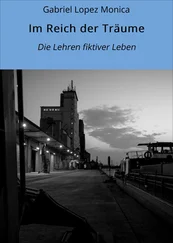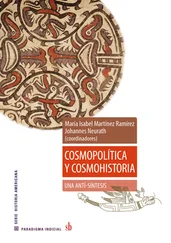Bloch shows how every time a new claim was made for the healing powers of the French king the English were quick to up their own claims. His book is thus essentially a study in medieval politics. It reveals the extent and power of the belief with which it deals but it does not really try to explain them. What it does make clear, however, is that the notion of a healing power emanating from a secular or religious leader is quite different from the complex set of expectations set up by the idea of pilgrimage. For though the healing of bodily ailments is obviously frequently one of the motives for pilgrimage, and is perhaps in the West today the only one, it was never the primary one. That, as Peter Brown has shown, was always the desire to go to a place to enter a holy presence. This is also central to the Hindu pilgrimage tradition, where it is called darshan : ‘To have the dar  ana of a saintly man, a temple, a holy river, an image of the deity, etc.’, writes the anthropologist E. A. Morinis, ‘is to acquire merit by virtue of simply having been in the presence of some form of radiance of the holy. This concept is important in all Hindu pilgrimage traditions as a sufficient motive for a pilgrim's pilgrimage.’ Thus it is in relation to pilgrimage rather than through the healing touch of a sacred being that we can best come to understand what lies behind our own modern and purely secular and instinctive need to touch whenever we travel to foreign lands.
ana of a saintly man, a temple, a holy river, an image of the deity, etc.’, writes the anthropologist E. A. Morinis, ‘is to acquire merit by virtue of simply having been in the presence of some form of radiance of the holy. This concept is important in all Hindu pilgrimage traditions as a sufficient motive for a pilgrim's pilgrimage.’ Thus it is in relation to pilgrimage rather than through the healing touch of a sacred being that we can best come to understand what lies behind our own modern and purely secular and instinctive need to touch whenever we travel to foreign lands.
11 The Therapy of Distance
To begin with we must understand what the displacement which pilgrimage entails did for the individual who undertook it. Peter Brown picks up a phrase used by Alphonse Dupront, who describes pilgrimage as ‘une thérapie par l'espace’, and comments: ‘The pilgrim committed himself or herself to the “therapy of distance” by recognising that what he or she wished for was not to be had in the immediate environment. Distance could symbolise needs unsatisfied, so that, as Dupront continues, “le pèlerinage demeure essentiellement départ”; pilgrimage remains essentially the act of leaving.’
This is what Chaucer evidently came to understand in the process of writing The Canterbury Tales . Originally he had planned the work so that his pilgrims would tell two tales on the way to St Thomas' shrine in Canterbury and two on the way back. That is the plan as announced in the General Prologue. But though the work as we have it is unfinished, we can see that in the course of writing he changed his mind and decided that he would deal only with the journey to Canterbury. Moreover — and this was one of his strokes of genius — he would end with the pilgrims still outside Canterbury, though within sight of it. The pilgrims are still shown going to Canterbury ‘the hooly blisful martir for to seke’ (I.17 — note the implication here that he is a living presence, not long dead), and there is no sense by the time the Parson speaks his prologue within sight of Canterbury that their journey has been cut short. On the contrary, the Parson says:
I wol yow telle a myrie tale in prose
To knytte up all this feeste, and make an ende.
And Jhesu, for his grace, wit me sende
To shewe yow the wey, in this viage,
Of thilke parfit glorious pilgrymage
That highte Jerusalem celestial.
(X.46–51)
The act of pilgrimage rather than its goal is the focus of the work as we now have it, thereby enabling Chaucer not only to use his fiction as a metaphor for human life and human imagining, but also to remain true to the dynamics of pilgrimage as developed in early Christianity. For, as Brown goes on to show, if ‘the distance is there to be overcome’, if ‘the experience of pilgrimage activates a yearning for intimate closeness’, that overcoming is never achieved, that intimate closeness is always deferred. For the pilgrims who arrived after their long journeys
found themselves subjected to the same therapy [of distance] by the nature of the shrine itself. The effect of ‘inverted magnitudes’ sharpened the sense of distance and yearning by playing out the long delays of pilgrimage in miniature. For the art of the shrine in late antiquity is an art of closed surfaces. Behind these surfaces, the holy lay either totally hidden or glimpsed through narrow apertures. The opacity of the surfaces heightened an awareness of the ultimate unattainability in this life of the person they had travelled over such wide spaces to touch.
In his account of the pilgrim centre of Tarapith in West Bengal, Morinis, for his part, explains:
The image which the pilgrim sees when he is led into the temple sanctum is about three feet tall, made of metal and heavily covered in clothing. The face and posture are representative of the T  r
r  known in conventional iconography — four-armed, tongue lolling, with a garland of skulls, etc. But it is emphasised by the priests of the temple that this is not the true image of T
known in conventional iconography — four-armed, tongue lolling, with a garland of skulls, etc. But it is emphasised by the priests of the temple that this is not the true image of T  r
r  . Every evening, following the sandhyã ãrati , pilgrims are allowed to have a dar
. Every evening, following the sandhyã ãrati , pilgrims are allowed to have a dar  ana of the original image. The conventional metal statue, is, in fact, hollow and open at the back.
ana of the original image. The conventional metal statue, is, in fact, hollow and open at the back.
Pilgrims who wish to see this image queue up and are admitted into the sacred chamber in small groups, but even here there are still boundaries, for ‘the stone image of T  r
r  has no discernible features. The events which are supposed to be depicted there are not easily made out.’ The priest unwraps the s
has no discernible features. The events which are supposed to be depicted there are not easily made out.’ The priest unwraps the s 

 which covers the stone image and then ‘points out to the pilgrims the significance of the various protrusions, depressions and other irregularities of the stone’. And Morinis concludes: ‘N
which covers the stone image and then ‘points out to the pilgrims the significance of the various protrusions, depressions and other irregularities of the stone’. And Morinis concludes: ‘N  laka
laka 
 ha and Dev
ha and Dev  would not be evident there to the unguided eye.’
would not be evident there to the unguided eye.’
Morinis explains how the pilgrim, once he has arrived at Tarapith, makes his way into the temple and to the sacred chamber. Brown, for his part, argues that the pilgrim journey was in a sense reduplicated in the actual sites:
In Tebessa, the approach to the shrine, as it wound past high walls, swung under arches, crossed courtyards, and finally descended into a small half-submerged chamber, was a microcosm of the long journey of pilgrimage itself. At the shrine of Saint Lawrence at Rome, the first sign of patronage by a Christian emperor involved a heightening of the effect of distance; Constantine installed flights of stairs leading up and down from the grave and ‘shut off’ the grave itself with a grille of solid silver weighing a thousand pounds, thus keeping the tomb of Lawrence still at a short distance from the pilgrims.
Читать дальше

 ana of a saintly man, a temple, a holy river, an image of the deity, etc.’, writes the anthropologist E. A. Morinis, ‘is to acquire merit by virtue of simply having been in the presence of some form of radiance of the holy. This concept is important in all Hindu pilgrimage traditions as a sufficient motive for a pilgrim's pilgrimage.’ Thus it is in relation to pilgrimage rather than through the healing touch of a sacred being that we can best come to understand what lies behind our own modern and purely secular and instinctive need to touch whenever we travel to foreign lands.
ana of a saintly man, a temple, a holy river, an image of the deity, etc.’, writes the anthropologist E. A. Morinis, ‘is to acquire merit by virtue of simply having been in the presence of some form of radiance of the holy. This concept is important in all Hindu pilgrimage traditions as a sufficient motive for a pilgrim's pilgrimage.’ Thus it is in relation to pilgrimage rather than through the healing touch of a sacred being that we can best come to understand what lies behind our own modern and purely secular and instinctive need to touch whenever we travel to foreign lands. r
r 
 which covers the stone image and then ‘points out to the pilgrims the significance of the various protrusions, depressions and other irregularities of the stone’. And Morinis concludes: ‘N
which covers the stone image and then ‘points out to the pilgrims the significance of the various protrusions, depressions and other irregularities of the stone’. And Morinis concludes: ‘N 
 ha and Dev
ha and Dev 










